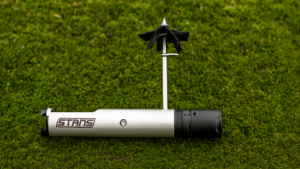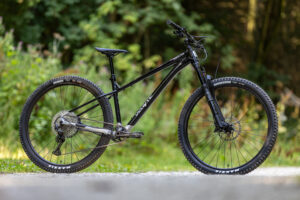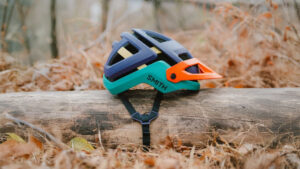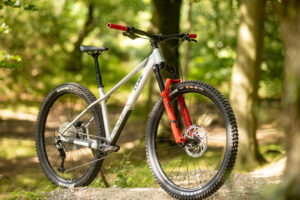Öhlins' RXF M3 fork gets a new chassis and a host of tweaks to make it one of the best all mountain forks I've tried
The most supple Öhlins RXF fork I’ve ever tested: the latest M3 update is a true rival for RockShox and Fox
The Öhlins RXF 36 is the Swedish brand’s mountain bike suspension fork with, you guessed it, 36mm stanchions. It gets 140mm, 150mm or 160mm travel (170mm with a 27.5in wheel) and this recently been updated version has a couple of new tricks under its crown that could make it one of the best mountain bike forks around.
The RXF line has been around for almost a decade and this 36mm version is the first to make it to a third (M3) generation after a significant redesign. All RXF forks are available with either air or coil springs to support rider wight and different versions of Öhlins’ signature TTX (Twin Tube) damper.
Bang in the middle of the range, the 36 can be seen as the do-it-all model, for trail bikes through to shorter travel enduro bikes. Öhlins also offers a similar aluminium and magnesium chassis with 34mm legs for XC and downcountry bikes, or 38mm ones for long travel enduro/bike park rigs or e-bikes. I’m also pretty sure we’ll be seeing more M3 versions on other RXF forks with different-sized legs soon.
– Short of time? Click here to skip to the verdict –

Version 3 gets an updated chassis, but the TTX damper inside remains unchanged
Öhlins RXF 36 need to know
- Revised version of the all-mountain RXF 36 gets three chamber air spring design, to tune the ramp up
- TTX cartridge damper, with independently adjusted high speed, low speed, and rebound
- Blue low-friction SKF seals to reduce stiction
- Sliding axle compensates for different hub widths, generating perfect alignment
- All-new casting 60g over the M2 and allows for increased bushing overlap internally
- £1,300 pricetag, 140-160mm travel (140-170mm in 27.5in)
Details and specification
With the M3 update, Öhlins is advertising improved sensitivity and greater traction. That’s all well and good, but what’s actually changed to potentially achieve that?
One thing that hasn’t is the TTX 18 damper cartridge, which the brand says performs so well, ‘we haven’t touched it’. Like previously, TTX internals are fully enclosed in a sealed unit and use an 18mm piston layout derived from the brand’s championship winning downhill fork as used by Loïc Bruni. The design relies on the principle of creating damping force from oil pressure build up one side of the piston, and gas pressure on the other side. Inside TTX, these two are always being equalised and pressure balanced, and unlike many single-tube dampers, Öhlins’ Twin Tube architecture also regulates oil flow through compression and rebound valves independently.

With 15 clicks of low speed compression you can dial in the fork for cornering stability
The fully sealed damper uses a circulating design with an inner and outer tube layout. During a compression (bump) event, oil flows only through the compression circuit and flows only through the rebound circuit for a rebound (return) event. A series of check valves divert oil back to loop the system and separately control oil flow when it is passing the compression and rebound valves in each direction. The design means TTX can always control and maintain pressure on each side of the piston.
On the outside I can tune the damper via a 3-way external adjustment. There are 15 clicks of low-speed compression and three of high-speed compression on the blue dial at the top of the leg, and 15 clicks of rebound adjustment on the lower gold knob to allow more or less oil to flow.

Rebound damping is independent of the compression circuits on the RXF 36
Öhlins also uses a novel 3 chamber air spring design. The layout is similar to Manitou’s, using a dynamic and adjustable ramp up chamber rather than fixed volume spacers to control bottom out resistance. The RXF ramp up chamber sits at the bottom of the air spring assembly in a thin tube with its own Schrader valve at the foot of the fork’s lowers. Above this are the self-balancing positive and negative chambers that use another separate air valve to add pressure at the crown end. To balance the system properly, you need to pump the lower ramp up section first and then the main air chamber next. Öhlins offers a pressure chart on the lower leg that I found to be more accurate than on previous RXF generations.

With two separate chambers to adjust – the main air spring and a ramp up chamber – the RXF isn’t a simple fit and forget fork
The idea with the extra complexity is I get to fiddle with the balance between all three chambers to tune the exact ride feel. Essentially, the main positive air chamber and the bottom-out chamber equalise as the fork compresses, and this happens earlier in the stroke if the pressure in that bottom-out control chamber is lower, and later if it’s higher.
Lower ramp up pressures therefore influence mid-stroke support as well, while higher pressures only really affect bottom-out resistance. It takes patience and experimentation to dial in, but I could tune the support exactly where I wanted it to be.

The ramp up chamber controls how much progression you get at the bottom of the stroke, and being separate from the main air spring means you can have it soft off the top, and ramping at the bottom
It means my preferred ramp up is more precisely tuneable – in the past I’ve cut spacers in half on RockShox forks looking for in-between settings. The way the fork bottoms out isn’t as ‘violent’ either, because the ramp up chamber doesn’t reduce the actual volume of the main air chamber like spacers do. To understand this, you need to know that the physics of making an air chamber smaller means it becomes less linear and more progressive. It can better resist smashing through the travel with a reduced air volume, whereas Öhlins’ ramp up chamber doesn’t affect the main air spring in the same fixed way.
You get more travel than with a conventional token set up, and extra bottom out resistance too
If I haven’t lost you, the outcome is that you will get slightly more travel for a given spring force than with a conventional token set up, but also still get extra bottom out resistance. This might sound like a perfect solution, but later on I’ll explain why in the real world this might not always be the case; partly because Öhlins’ air spring lives sealed inside the fork leg and likely has a smaller overall volume than some rivals in the first place. Either way, the ramp up feels different to many other forks and a bit less pronounced.

SKS seals must take some of the credit for the RXF’s low-stiction feel
This triple air spring design isn’t new to M3, but has been significantly retuned to be more linear and a little less progressive at the end of the stroke as well, so it plays nicely with a wider range of rider weights and preferences. When I asked Öhlins exactly what this meant in terms of changes, it was tight-lipped and mentioned that there will be an announcement at the end of May as to exactly what’s going on inside. Whatever it is, I’ve tested multiple RXF forks before and this is by far the most supple and sensitive, so there’s definitely something afoot.

Just like on a Fox 36, the sliding axle is there to ensure the hub lines up perfectly with the fork dropouts
The air spring differs from many rivals by also being fully encased inside a sealed cartridge, rather than using the actual interior of the fork leg to hold the air that supports rider weight. It means you can easily swap it out for a coil spring and vice versa, whereas with other brand’s forks, if you install an aftermarket coil spring conversion, you’ll not only void the warranty, but also damage the inside of the stanchion with the metal spring rubbing against it, so it will likely no longer hold air properly anyway to swap back to a lighter air spring.
Elsewhere, it looks like the same blue low-friction SKF seals as on other RXFs. There’s also the same clever sliding axle to compensate for different hub widths, so the fork lowers don’t get distorted when tightened (which would potentially increase binding on bushes and the seals).

The bulging lower legs show how much overlap the new chassis gets
As well as those revisions to the air spring, further big changes come in the chassis. Öhlins has introduced an all-new casting that saves around 60g over the M2 and allows for increased bushing overlap internally. You can see a more pronounced double hump around the seals and a different shape at the front of the arch here. The extra bushing overlap is to allow each half to telescope in and out more smoothly.

With a new forged crown saving upwards of 60g in weight, Ohlins can use that gain to reinforce other areas of the fork
RXF 36 lowers and the forged crown are both completely new then and use less material in places to achieve the weight saving, although this new M3 was actually a smidge heavier than the M2 I tested about four years ago. That older model was 150mm not 160mm travel though, and potentially lighter because Öhlins’ entire sealed air spring assembly requires swapping out between a longer or shorter one to change the travel. I’m guessing the longer spring unit weighs more.
The RXF 36 price of a penny under £1,300 is top end, but not dissimilar to other mainstream rivals. For comparison, Fox’s latest Float 36 Factory (that has also just been updated and increased its bushing overlap by 30mm) is £100 more at £1,399, whereas RockShox’s Lyrik Ultimate with Charger 3.1 is over £100 cheaper at £1,079. In terms of weight, the latest Fox 36 with revised casting lowers is 2,130g in 160mm and the Lyrik is 2,028g in 160mm travel (both in 29in size) compared to Öhlins 2,100g; so RockShox’s fork is a fair bit lighter than the competition.

Still the coolest colour in mountain bike racing
Performance
Last time testing the RXF 36 M2, I said the “damping performance and control is at least as good as any other single crown fork on the market… it worked hard on certain sections of trail, especially with rapidly repeating hits, it handles flawlessly, tracking every nuance of the ground with precision and the perfect amount of support.”
Sounds great, but the caveat to this was while the M2 excelled when pushed to the absolute limits, but wasn’t as supple over small repeated chatter bumps as a RockShox Lyrik (in 2021) and my hands felt like they floated over vibrations less. My overall conclusion therefore was that it didn’t stand out from its mainstream rivals when ridden in a “more relaxed style” and that it also needed more looking after and more faffing to set up.
Well, I’ll tell you straight away that this M3 version is markedly more supple and sensitive than its predecessor, so does that mean it’s now the best 36mm fork on the market? I’m not sure I’m ready to make that claim after only about 50hrs on the fork, but it’s definitely impressive, albeit still with a few caveats.

I found the ride feel much plusher and easier to break away in the new RXF
The M3 is so keen to suck into the floor and iron out every little ripple and stone that I double checked with Öhlins to see if it hadn’t increased the volume of the negative air chamber without advertising it, wondering if that was what I was feeling. I was told there were no such changes, so some of the extra suppleness at least must come from the fact that the new bushing arrangement and work on the chassis has made the legs slide in and out much more smoothly. And, presumably, whatever has been done to the air spring to tweak the ride feel that I’m not allowed to know about yet.
The setup is still more faff to set up than other rivals because I have to set up the three-way air spring in the right order. Rather than running the main chamber with less than the recommended air pressure and the ramp up chamber with more to gain extra suppleness off the top and still get enough bottom out resistance, there is more than enough suppleness off the top now, so you need to tune the whole spring side for more support or the fork can feel a bit hyperactive.
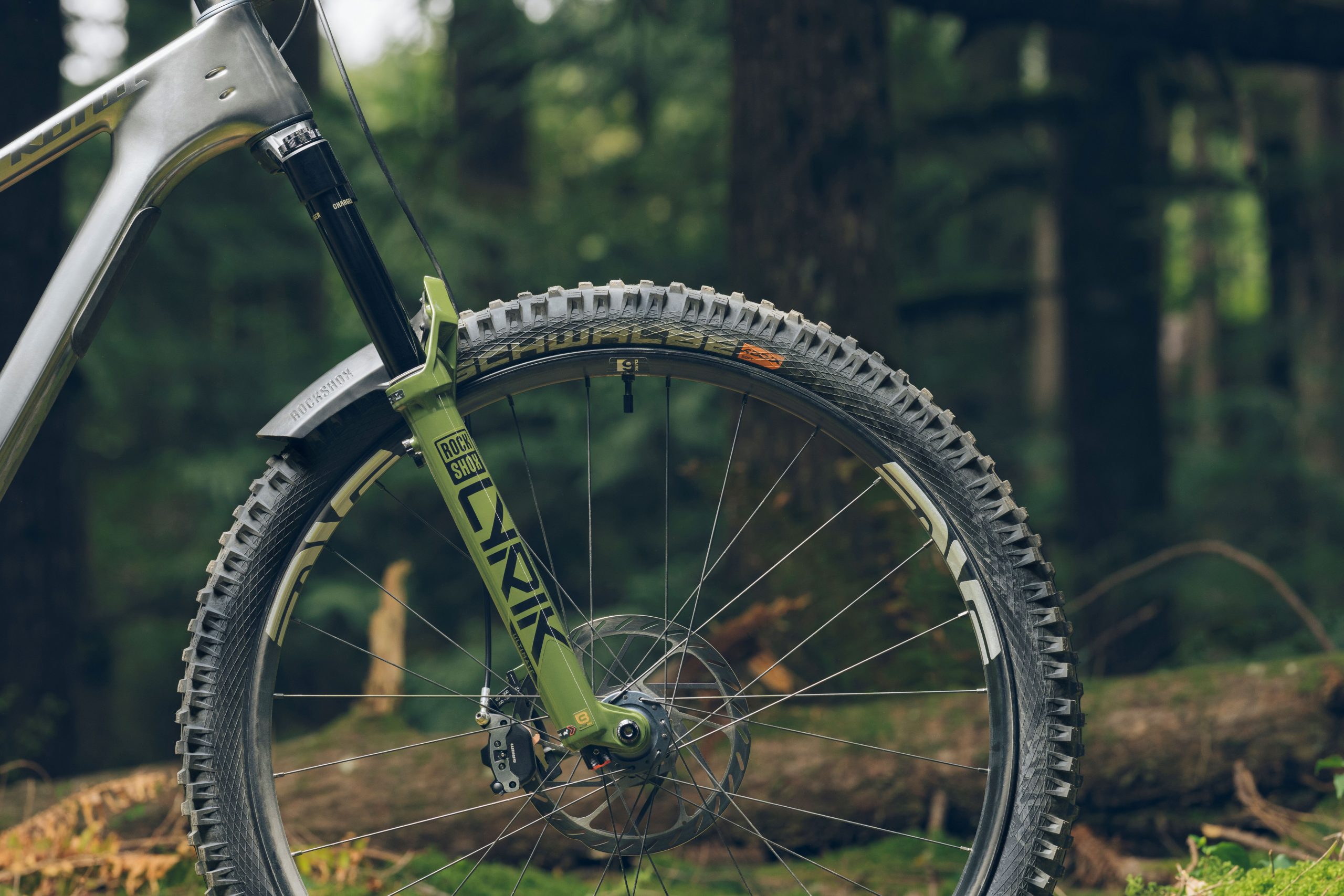
The RockShox Charger 3.1 damper is the current benchmark, and the Ohlins TTX is definitely challenging it
Touchdown and back/forth movement around sag is now every bit as light and fast as RockShox’s Charger 3.1, so there’s amazing ground tracing of small bumps and the damping also feels composed, calm and smooth on bigger hits, absorbing slappy hits dropping off ledges or landing jumps.
I ran the rebound much more in the middle here too, which must also point to much less friction in the system, considering the if the TTX damper hasn’t changed. You’re having to control bounce back with extra damping, rather than relying on a bigger proportion of friction and stiction in the fork as it slides to keep it calm. This is obviously a superior and more controllable way to do things.

You’ll get handy with a shock pump if you ride with this fork, as it takes a lot of fine tuning on the main air chamber
The fork felt very good with Öhlins stock settings on the air spring, but once I fettled more to get the air spring totally dialled in the performance went up to great. It’s a good bit of trial and error to cycle between the settings and find the sweet spot, which might be a big ask for some riders that don’t fiddle with suspension all the time. One thing I really like about his fork though is you can run quite a bit (too much even) of damping without it feeling harsh and spikey, so it’s harder to ‘mess up’ the TTx damping. Basically, there’s always a dull plasticine feel at the tyre, rather than a plastic feel, and it’s either quicker or slower… if that makes sense?
The Öhlins air spring has a very precise window to get things right though, and balance enough support without being too firm in the mid stroke. I set it exactly how I want it and 95% of riding time it works fine and I could use all the travel efficiently. But occasionally I really smashed through all the travel on the biggest hits (maybe once every few runs) and got a very harsh, almost metallic, bottom out. That’s something I don’t seem to get on other brand forks. Pump up the ramp up chamber too much though, to combat this like on the older M2 model, and it seems to affect the ride height and overall ride feel here more, rather than just the bottom out zone. Maybe I need to experiment more, but it’s aspects like this that make it fiddlier while you’re looking for perfection.

I found the update pressure chart guides much closer to reality on the new RXF
So, is this now the benchmark in 36mm forks? I don’t have a current model year Lyrik fork to test against, but have ridden that fork on test bikes and been very impressed, so reckon it would be a close call. In terms of Fox, I did have a chance to back-to-back the M3 against a Float 36 with a GripX damper on home trails, and if I had to stick my neck out and choose one to keep on my own bike, the RXF 36 would be my clear preference. Before you get too carried away thinking this means it’s better than Fox, I also much prefer the GRIPX2 fork to the GRIPX, so maybe that’s not as conclusive as it sounds.
Verdict
Öhlins has made its RXF 36 even more supple and sensitive in this M3 version and new design touches have also shaved a bit of weight. There is less external adjustability with Öhlins 3-way adjustable TTX damper than some forks, but you can’t argue with the performance of it on the actual trails. Performance here is at least as good as rivals 90% of the time, but on rare occasions, it was too hungry with all the travel on really heavy hits, while otherwise feeling perfectly dialled. The only thing really stopping me awarding top marks though is the RXF design is still a bit complicated to tune in the air spring and balance it against the damping. Like Fox’s GRIPX2, some riders might struggle with set up here, it's definitely more complex than RockShox’s plug and play approach on its latest Charger 3.1 forks that are also a bit cheaper and lighter in weight.










